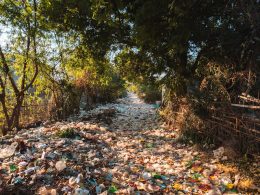Introduction:
The Colorado River, one of the most vital water systems in the southwestern United States, faces multiple challenges due to increasing demands and changing environmental conditions. In this report, we examine the impact of recreation and tourism on the Colorado River system and the implications for its long-term sustainability.
1. The Growing Popularity of Recreational Activities:
The Colorado River has long been a popular destination for recreational activities such as boating, fishing, and rafting. The scenic beauty and diverse ecosystems along its course attract millions of visitors each year. However, the increasing number of people participating in these activities places additional stress on the river’s limited water resources.
2. Water-Based Recreation and Water Consumption:
Recreational activities on the Colorado River often require significant amounts of water. Motorized watercraft, golf courses, and water parks contribute to the overall water demand. As water availability becomes more constrained, balancing the needs of recreational users with the preservation of the river’s ecosystem becomes a pressing concern.
3. Environmental Impacts of Recreation:
Recreation and tourism can have adverse effects on the delicate ecosystems supported by the Colorado River. Habitat destruction, water pollution from boating and recreational vehicle use, and disturbance to wildlife are among the environmental impacts associated with high levels of recreational activities. Implementing sustainable practices, such as promoting low-impact recreational choices and enforcing environmental regulations, is crucial to minimize these negative effects.
4. Challenges for Local Communities:
Recreation and tourism play a significant role in the economies of communities along the Colorado River. However, the dependence on these industries can create vulnerabilities, particularly during periods of drought or when water availability is reduced. Diversifying local economies and exploring alternative sources of revenue can help mitigate the economic risks associated with overreliance on recreation and tourism.
5. Balancing Recreation and Conservation:
Efforts are underway to strike a balance between promoting recreational opportunities and protecting the health of the Colorado River system. Collaborative initiatives involving government agencies, conservation organizations, and stakeholders from the recreation and tourism sectors aim to find sustainable solutions. These include water conservation campaigns, eco-tourism practices that prioritize environmental stewardship, and the development of recreational infrastructure that minimizes the impact on water resources.
Conclusion:
Recreation and tourism contribute to the stress on the already strained Colorado River system. The popularity of water-based activities and the environmental impacts they generate necessitate careful management and planning. By implementing sustainable practices, raising awareness about responsible recreation, and fostering collaboration between stakeholders, we can strive for a balance that allows for enjoyable recreational experiences while safeguarding the long-term health of the Colorado River. Preserving this valuable resource requires collective efforts to ensure its availability for future generations and the sustainability of both the river ecosystem and the communities that rely on it.












